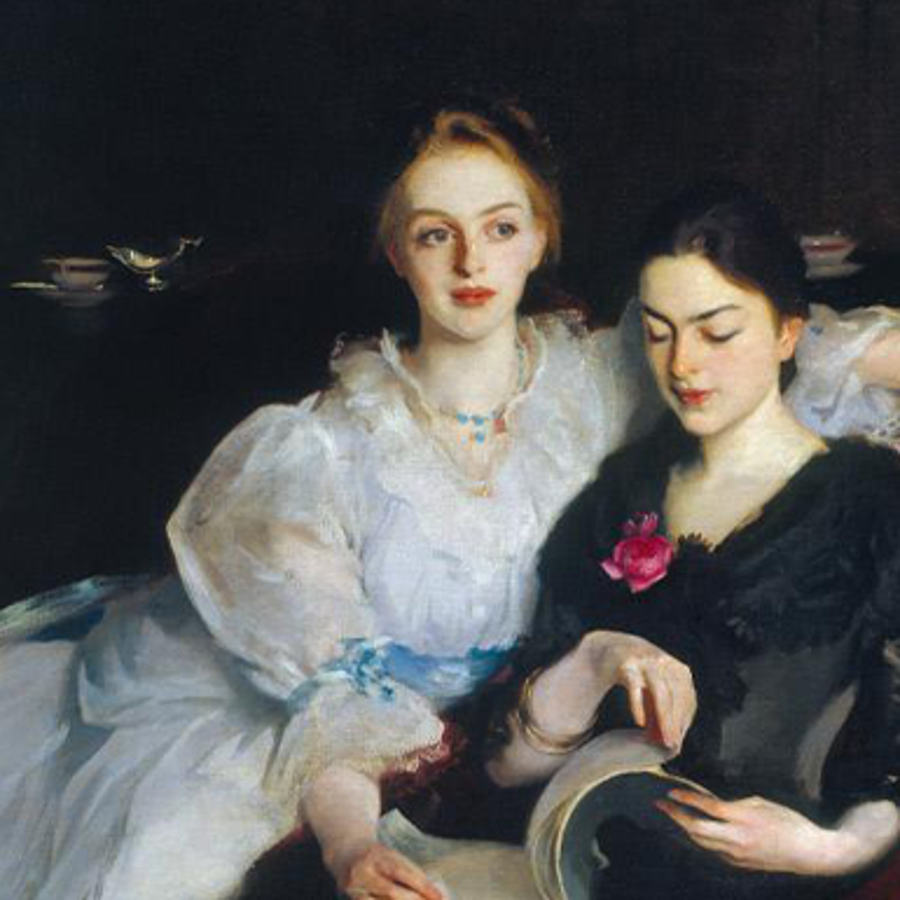
I have 0.5% of an ancestry that my sister doesn’t have at all! How can that happen?
June 19, 2013

- Related Topics:
- Consumer genetic testing,
- Ancestry,
- Ancestry tests
A curious adult from the U.S. asks:
"I recently did an ancestry test. I came out as 0.5% African but my sister came out with no African. Shouldn’t she be 0.5% too?"
This is such a great question. There is no reason to expect that the both of you should have 0.5% African ancestry even though you came from the same parents. Your result is a perfectly reasonable one.
With such a low percentage, it’s actually possible that you don’t have any African ancestry at all! Anything below 1% or so might be a false positive. Percentages that low are notoriously hard to interpret, and I wouldn’t put too much faith in it.
But it also is possible for you to have a small amount of African ancestry while your sister doesn’t. Even though you and your sister both inherited your DNA from the same two people, you didn’t inherit the same DNA. For that reason, it’s not uncommon for siblings to have different ancestry results.
This goes against the way most of us think of these things. For example, in my family, we are always quoting what percentage of Native American ancestry we have.
We had a distant relative who was from the Cherokee tribe. Because of that, we say that my dad is 1/8th Native American and I am 1/16th. While this is true from a genealogical standpoint, it may not be true from a DNA one.
Because of how DNA is passed on, I may have no Cherokee ancestry left in my DNA. This is even though my relative really was Cherokee. And even though we really do get half our DNA from our moms and half from our dads.
What we need to know to understand results like yours is that the half the DNA we get from each parent is chosen at random. So, for example, it may be that my grandpa just happened to pass no DNA with Cherokee ancestry to my dad. A DNA test would say he had no Native American in his heritage even though our family tree clearly does.
This sort of thing becomes more and more likely as the amount of DNA gets smaller and smaller. Once we are dealing with 0.5% of something, we are really talking about one or maybe two tiny bits of DNA. In fact, it is so small each child might have just a 50% chance of inheriting any of it from their parent(s). And if a child happened to get half or even less of that 0.5%, the test might not even see the DNA any more.
What I’ll do for the rest of the answer is use a few diagrams to try to make it a bit clearer how you and your sister could end up with different amounts of African ancestry. I’ll use my DNA results as an example.
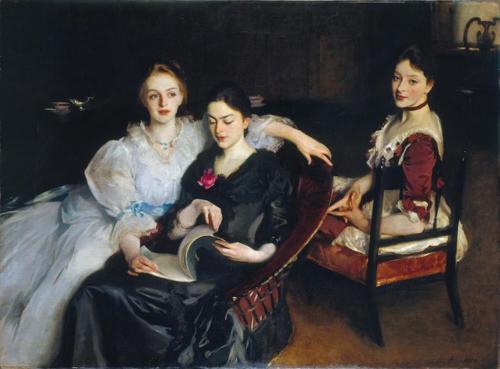
A Touch of African
Our DNA is stored in chromosomes. Most people have 23 pairs of chromosomes for a total of 46.
One chromosome from each pair comes from mom and one from dad. This is where the 50% of your DNA from mom and 50% of your DNA from dad comes from.
Here is what my chromosomes look like from an ancestry point of view:
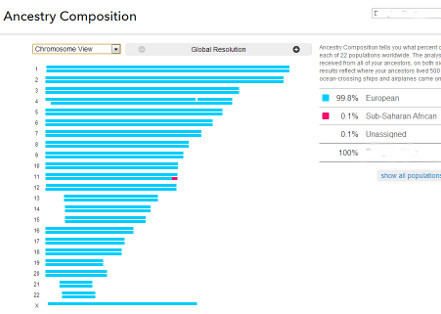
As you can see I have 22 pairs of chromosomes labeled 1-22 and then a lone X chromosome. In reality, I have a Y to go with my X but this isn’t shown in this ancestry test. If I were female, I’d have two X’s. One of each pair of chromosomes came from my mom and one from my dad.
I have almost entirely European ancestry, which is shown in blue. But you can also see a trace amount of Sub-Saharan African ancestry, which is shown in red. Let’s zoom in on the pair of chromosome 11’s:

Looking at me you’d never guess there was an African American in my family tree. But that is what that red at the tip of one of my chromosome 11’s suggests. Somewhere on my mom’s or dad’s side of the family, there may have been an African ancestor. (Probably dad for family history reasons).
OK, now let’s imagine what might happen with this chromosome pair and my kids. In a simple world, each child would have a 50% chance of getting the top one and a 50% chance of getting the bottom one. This would mean that each child would have a 50% chance of inheriting a bit of African ancestry from me and, of course, a 50% chance of not inheriting my African ancestry.
This would be enough to explain your situation. One of your parents had one chromosome in a pair that had some African ancestry. You happened to get this chromosome and your sister got the other one. Simple.
Except of course, as any reader of our answers knows, nothing in biology is ever that simple! To get at what actually happens, we need to go a little deeper into how a parent’s DNA is distributed into sperm and eggs.
This explanation won’t change the basics of what we’ve already talked about. But it can show how other results are possible. Like how you and your sister might have each ended up with 0.25% African ancestry.
Uniquely Yours
When we pass our DNA down, we don’t actually pass down one of our two chromosomes in each pair. Instead we pass down a chromosome that is a mix of the two in the pair. The DNA in each pair is swapped in a process called recombination.
Let’s focus on my pair of chromosome 11’s. Here is one way the DNA might have swapped:
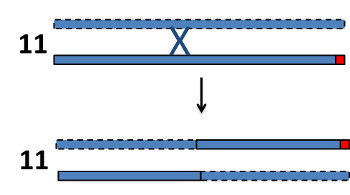
I gave one of the chromosomes a dashed line so we could tell the two apart. The X between the two in the pair is a common way to show where the DNA was swapped between the two chromosomes.
As you can see, here it doesn’t matter that the DNA recombined. Each child still has a 50% chance of getting all of my African ancestry and a 50% chance of getting none.
But imagine the DNA swapped like this instead:
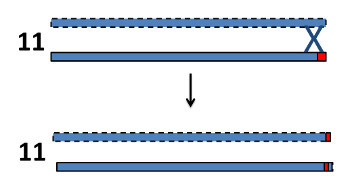
Now each child will get a bit of African ancestry. They will be down to 0.05% but it will be there (although it might be a small enough bit that the test can’t see it).
A recombination that happens right there, right in the middle of the part of my DNA that shows African ancestry would not happen very often. Where DNA gets swapped is pretty random too.
So the most likely outcome for my kids at this point is an all or none one. They will each have a 50% chance for getting my 0.1% African ancestry or a 50% chance of getting none.
This sort of scenario probably describes your situation as well. You happened to get a chromosome that has a bit of African ancestry and your sister got a chromosome without it.

Author: Dr. D. Barry Starr
Barry served as The Tech Geneticist from 2002-2018. He founded Ask-a-Geneticist, answered thousands of questions submitted by people from all around the world, and oversaw and edited all articles published during his tenure. AAG is part of the Stanford at The Tech program, which brings Stanford scientists to The Tech to answer questions for this site, as well as to run science activities with visitors at The Tech Interactive in downtown San Jose.
 Skip Navigation
Skip Navigation
